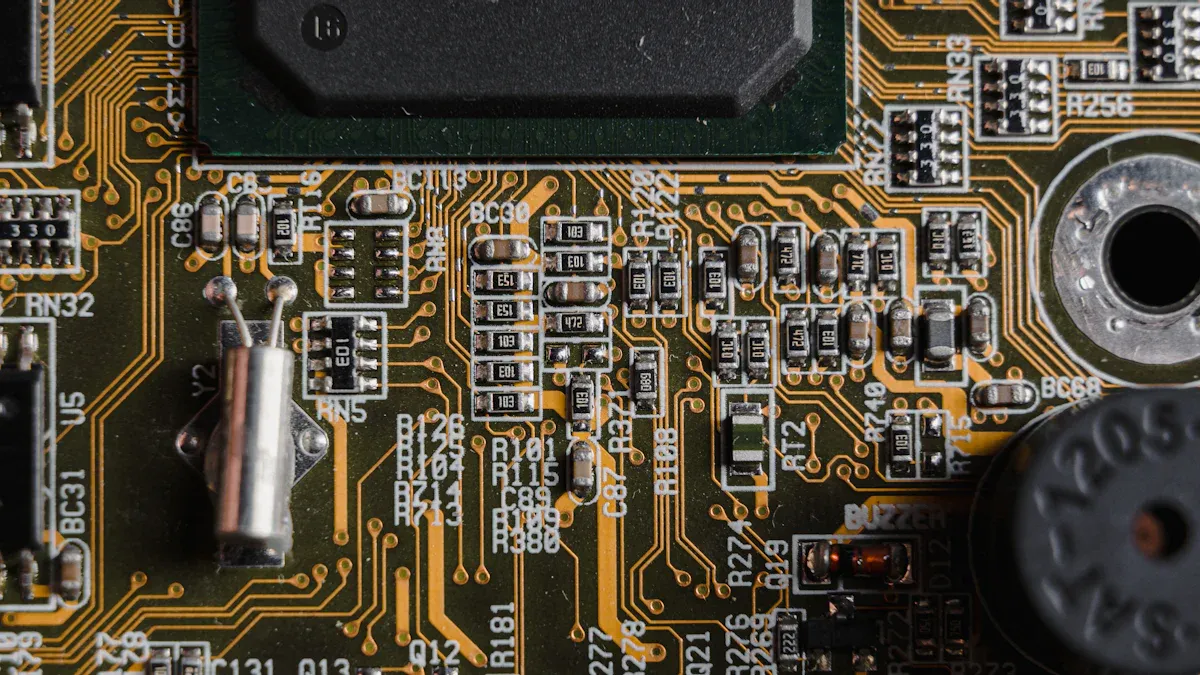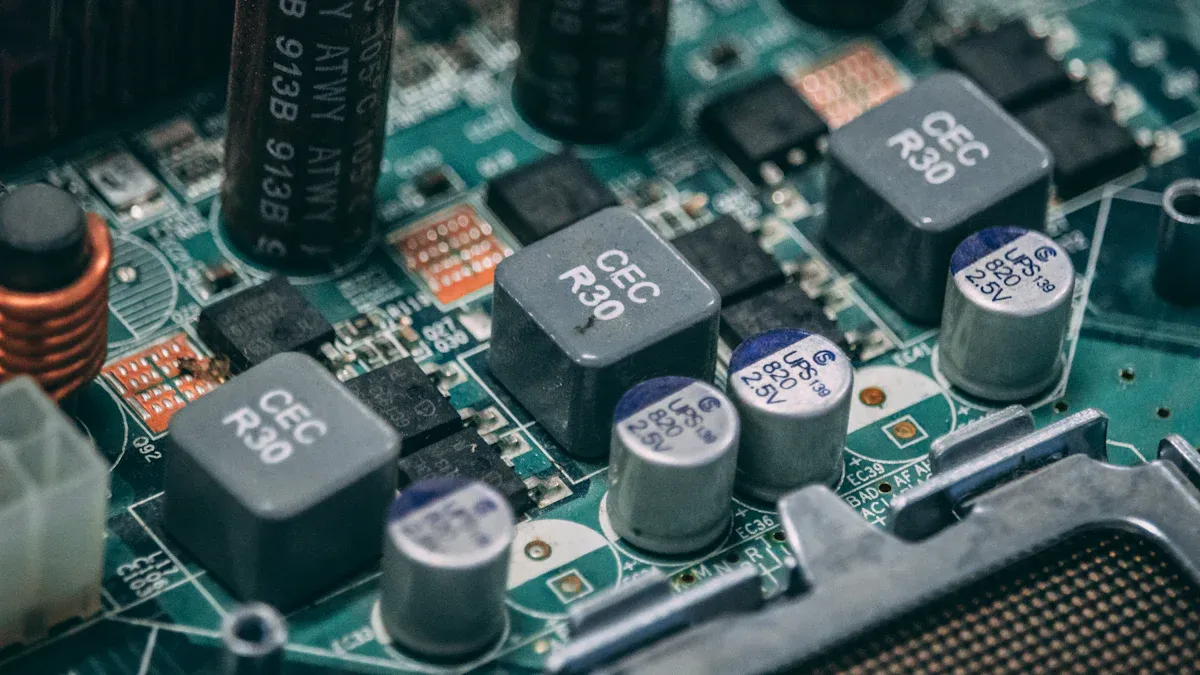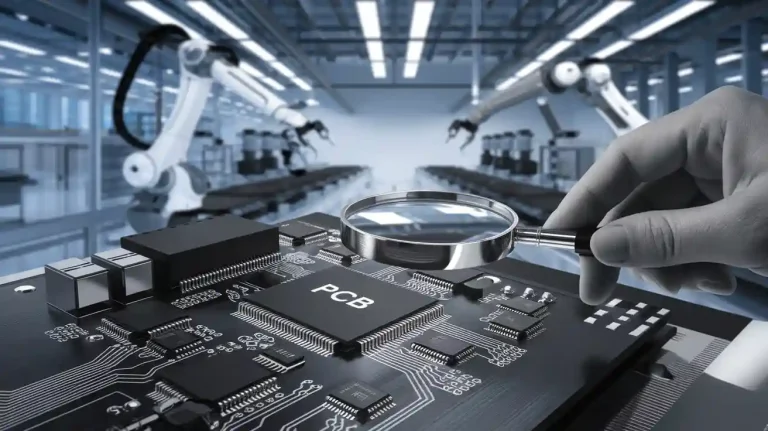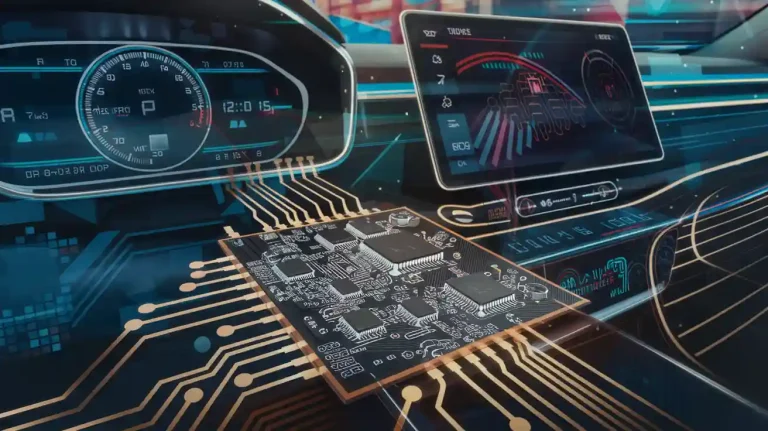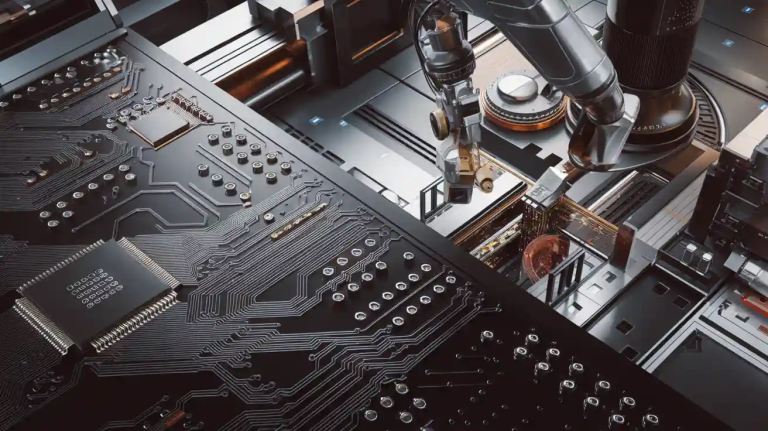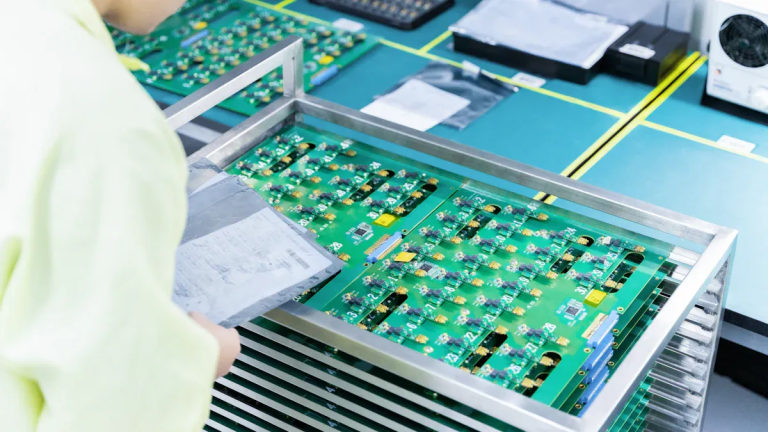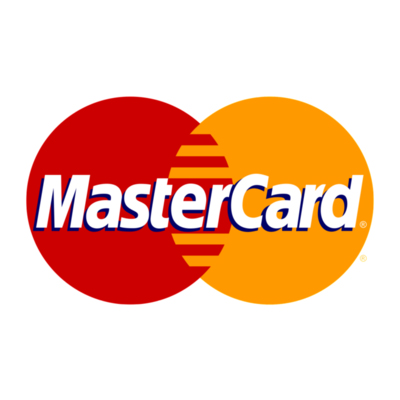Surface mount technology has transformed manufacturing by accelerating assembly PCB processes. It also enhances the efficiency of PCB operations. For example:
- SMT lines improved OEE by 8.6%, 15.7%, and 18.6%.
- Many lines can still improve, as top makers aim for 85% OEE.
Key Takeaways
- SMT uses tiny parts, saving space for small gadgets like phones.
- Machines in SMT work fast and make fewer mistakes, cutting costs for big factories.
- Think about SMT problems, like hard repairs and high start-up costs, before choosing it for your needs.
Benefits of Surface Mount Technology
Space-Saving Design in Assembly PCB
Surface-mount technology changes how printed circuit boards (PCBs) are made. It uses smaller parts than older through-hole methods. This helps create smaller and more efficient designs. This is very useful for gadgets like smartphones and wearables where space is tight.
- SMT parts are much smaller than through-hole parts.
- Smaller designs make PCBs fit better in tight spaces.
- Lighter PCBs save money on shipping and handling costs.
Using SMT helps you use space wisely while keeping devices functional. It improves designs and makes manufacturing more efficient.
Cost Efficiency for High-Volume Production
SMT is great for making lots of products at once. Machines do most of the work, so less human help is needed. These machines can place thousands of parts on a PCB quickly, saving time.
- SMT uses machines to make assembly faster and easier.
- Fewer workers are needed, which lowers production costs.
- Machines make fewer mistakes, so quality stays high.
For big orders, SMT is a smart and cost-saving choice. It helps meet demand without losing quality or speed.
Enhanced Compatibility with Automation
Modern factories rely on machines, and SMT works well with them. It fits perfectly with automated systems, making production faster and more accurate.
- SMT uses robots and machines to place parts on PCBs.
- Machines solder parts securely, ensuring good quality.
- Automation speeds up production and improves efficiency.
With SMT, you can use automation to make production smoother. This increases output and keeps your business ahead in manufacturing.
Improved Electrical Performance and Component Density
SMT not only saves space but also improves how PCBs work. It allows more parts to fit in a small area, adding more features.
| Study Focus | Results |
|---|---|
| Mechanical Stress in SMT | Parts stay steady under stress, ensuring they work well. |
| Adhesive Bonding | Glue keeps parts in place during soldering. |
| Soldering Process | Machines make strong and reliable solder joints. |
- More parts in less space make designs smaller and better.
- Machine soldering makes connections strong and dependable.
- Glue helps keep parts stable during assembly.
SMT gives better performance and reliability, making it ideal for advanced devices.
Limitations of Surface-Mount Technology
Challenges in Repair and Rework
Fixing SMT components can be tricky and time-consuming. Unlike THT, SMT parts are tiny and packed closely together. This makes them harder to reach and fix. If a part breaks, replacing it needs special tools and skills.
- Tiny SMT parts need precision tools for handling.
- Fixing SMT boards requires experts, raising labour costs.
- Crowded layouts make finding problems slower and harder.
Think about these issues before choosing SMT. If you often repair or test designs, SMT might not be the best option.
Thermal Sensitivity of Components
SMT components are very sensitive to heat, which can harm them. The soldering process in SMT uses high heat, so careful temperature control is needed to avoid damage.
🔥 Tip: Manage heat well to stop SMT parts from failing.
- SMT parts get damaged by heat more easily than THT parts.
- Too much heat can make parts wear out faster or act strangely.
- Bigger parts in THT handle heat better, making them good for high-voltage uses.
If your design needs parts that can handle heat, check if SMT is the right choice.
Higher Initial Setup Costs
Starting with SMT needs a lot of money upfront. SMT uses advanced machines like robots and ovens, which cost a lot to buy and maintain.
- High equipment costs can be tough for small businesses.
- Training workers to use SMT machines adds extra expenses.
- SMT saves money only when making large amounts of products.
If you make small batches, SMT might not save you money. Think about whether the long-term savings are worth the big starting cost.
Limited Suitability for Certain Components
SMT works well for small designs but struggles with some parts. Big, heavy parts often need extra support that SMT cannot give. Testing and building small circuits may need other methods.
- SMT doesn’t work for big or heavy parts needing stability.
- Some electrical or heat needs make THT a better choice.
- Testing small circuits is easier with THT methods.
If your design uses parts SMT can’t handle, try mixing SMT with THT. This can give you both good performance and flexibility.
Balancing the Pros and Cons of SMT Assembly
Checking Costs and Benefits
Before using surface-mount technology, think about its costs. SMT saves money over time but needs big spending first. Robots and machines cut labour costs and waste materials. These machines, however, cost a lot to buy and set up. SMT works well for making many products quickly with fewer mistakes. For small production, the high costs may not be worth it. Carefully check the costs and benefits to make a smart choice.
Matching Production Needs and Amounts
How much you produce matters when choosing SMT. SMT is great for making lots of products with machines. Machines make fewer mistakes and improve speed and quality. For small batches, the setup costs might be too high. Match your production needs with SMT’s abilities to save time and money.
Training Workers for SMT Skills
Using SMT needs workers with special skills. Running SMT machines takes training to avoid mistakes. Without training, errors can cost money and slow down work. Teach your team how to use SMT properly. Skilled workers make production faster and more reliable.
Mixing SMT with Other Methods
If SMT doesn’t meet all your needs, try mixing methods. Use SMT with through-hole technology (THT) for better results. SMT makes small designs and works well with machines. THT is good for bigger parts that need extra support. Mixing both methods gives you flexibility for different projects. This helps you get the best results for your assembly pcb tasks.
Surface-mount technology has changed how products are made. It makes assembly pcb faster and more efficient. SMT has many good points, like saving time and money. It also improves how high-frequency circuits work. Machines can place thousands of parts every hour. This speeds up pcb production and reduces mistakes. But SMT has some downsides, like being hard to fix and needing precision tools.
| Advantages | Disadvantages |
|---|---|
| Faster production | Needs precise tools |
| Saves money in making products | Hard to repair |
| Better performance in electronic devices | |
| Fewer mistakes | |
| Smaller parts make designs better | |
| Works well for high-frequency circuits |
Think about what your factory needs before using SMT. Spend wisely on tools and training to get the best results. Balancing the pros and cons can help improve your manufacturing process.
FAQ
Why is surface-mount technology good for faster production?
SMT uses machines to place parts quickly and correctly. This lowers mistakes and speeds up making PCBs. It’s great for making many products fast.
How does SMT save money in manufacturing?
SMT cuts labour costs by using machines instead of people. It also wastes less material and works efficiently, saving money for big productions.
Can SMT allow flexible designs?
Yes, SMT helps make flexible designs with smaller layouts. It improves performance and is perfect for modern gadgets like phones and smartwatches.



